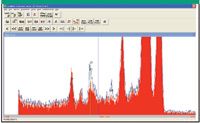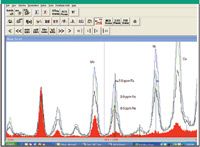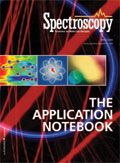Quantitative Analysis of Low Levels of Chlorine and Iron in Hydraulic Oil Samples
Application Notebook
Simple, fast, and reliable on-site hydraulic oil analysis should be an integral part of any preventative maintenance program. Since the majority of machine failures are contamination related, it is important to analyze the hydraulic fluid to monitor equipment condition and identify machine wear. Significant cost savings can result from early identification of machine failure, oil quality, handling and other problems. Oil analysis can detect changes in oil quality, contamination, wear and chemical differences. Benefits of this information include prolonged equipment life, reduced equipment downtime, and reduced overall maintenance costs. In addition, plants can increase intervals between oil changes, thus reducing waste oil, maintenance, and oil purchase costs.
Simple, fast, and reliable on-site hydraulic oil analysis should be an integral part of any preventative maintenance program. Since the majority of machine failures are contamination related, it is important to analyze the hydraulic fluid to monitor equipment condition and identify machine wear. Significant cost savings can result from early identification of machine failure, oil quality, handling and other problems. Oil analysis can detect changes in oil quality, contamination, wear and chemical differences. Benefits of this information include prolonged equipment life, reduced equipment downtime, and reduced overall maintenance costs. In addition, plants can increase intervals between oil changes, thus reducing waste oil, maintenance, and oil purchase costs.

Figure 1: Spectrum of the Cl acquisition. Here is an 18.6 ppm Cl standard and a blank. The blank membrane filters contain minute traces of Cl. The Pd La line comes from the Pd X-ray tube excitation source.
EDXRF spectroscopy is an ideal technique for this application because it is non-destructive and allows simultaneous multi-element detection. XRF analysis is used to predict the onset of abnormal wear or resolving failure analysis issues. XRF can reveal information about the rate of wear in the machine and the possible source of contamination. Test results are designed to quickly and easily identify potential problems with industrial equipment.
Experimental conditions
X-ray fluorescence spectroscopy is now being used for quantitative analysis of wear and additive metals and condition monitoring of hydraulic fluids. An x-ray source is imparted on the oil flow and a detector reads the x-ray emissions from the flow. The resulting data is analyzed and the elemental content is displayed. This system performs a quantitative detection of 12 elements in the parts-per-million range.
Jordan Valley's powerful Energy Dispersive X-Ray Fluorescence (EDXRF) EX-6600 spectrometer uses Si(Li) Light Element Optimized (LEO) detector and eight secondary targets to provide maximum sensitivity for quantitative analysis of oil samples. This study will show results of Cl and Fe. The LEO detector's sensitivity also exhibits a resolution of less than 140eV for Mn. The EX-6600 is also equipped with a selection of six tube filters that can be run in the direct excitation mode. For analyzing trace elements in samples, secondary targets are recommended as they eliminate most of the background further optimizing sensitivity and precision. This gives the operator a great deal of flexibility examining a wide range of elements and matrices. The patented Wide Angle Geometry optical system gives the advantage of both direct and polarized excitation.

Figure 2: Differing loading concentrations on the ion exchange filter, showing the sensitivity of the element of interest, Fe. The red spectrum is the blank. The peak in the Fe region of the blank is the Mn Kb peak.
To reach the low detection limits, the samples were filtered using a vacuum filtration system an analyzed directly on the EX-6600.
Results
The calculated MDL for Cl is 0.06 ppm and the calculated MDL for Fe is 0.03 ppm at the 95% confidence level.
Conclusions
The results of this study indicate that excellent performance is achieved using the Jordan Valley EX-6600. Optimum analysis of all of the elements of interest, specifically Iron and Chlorine, is due in part to the precision, accuracy and sensitivity of the LEO detector in the EX-6600. Given sufficient independent standards, precise calibrations for each element of interest can be achieved. The versatility, ease of use, and powerful software of the Jordan Valley EX-6600 makes this an ideal instrument for this application.
Jordan Valley AR, Inc. 8601 Cross Park Dr., Suite 200 Austin, TX 78754 Tel. (512) 973-9229, Fax. (512) 973-9282 info@jordanvalley-apd.comwww.jordanvalley-apd.com

Thermo Fisher Scientists Highlight the Latest Advances in Process Monitoring with Raman Spectroscopy
April 1st 2025In this exclusive Spectroscopy interview, John Richmond and Tom Dearing of Thermo Fisher Scientific discuss the company’s Raman technology and the latest trends for process monitoring across various applications.
A Seamless Trace Elemental Analysis Prescription for Quality Pharmaceuticals
March 31st 2025Quality assurance and quality control (QA/QC) are essential in pharmaceutical manufacturing to ensure compliance with standards like United States Pharmacopoeia <232> and ICH Q3D, as well as FDA regulations. Reliable and user-friendly testing solutions help QA/QC labs deliver precise trace elemental analyses while meeting throughput demands and data security requirements.